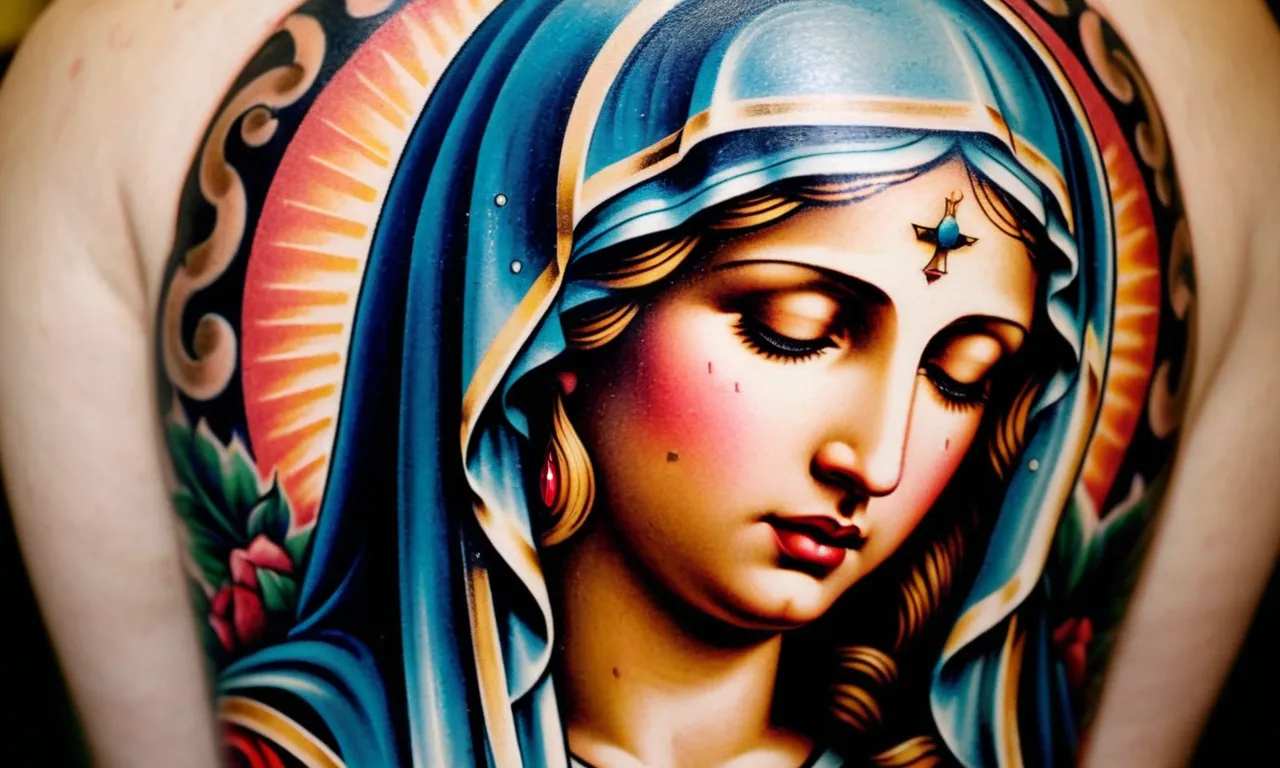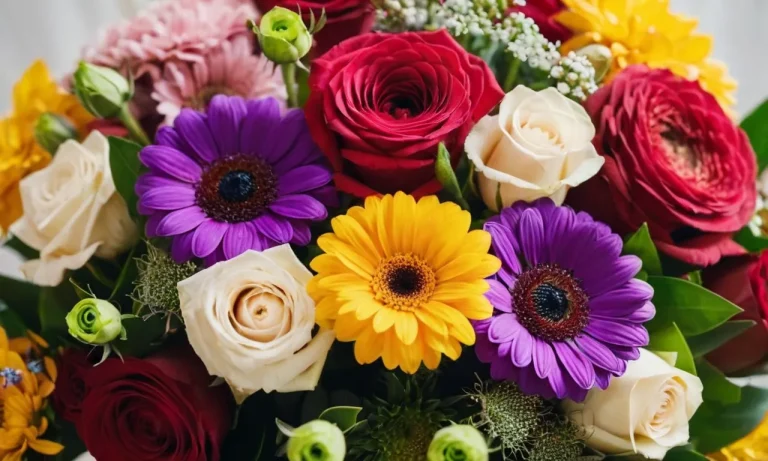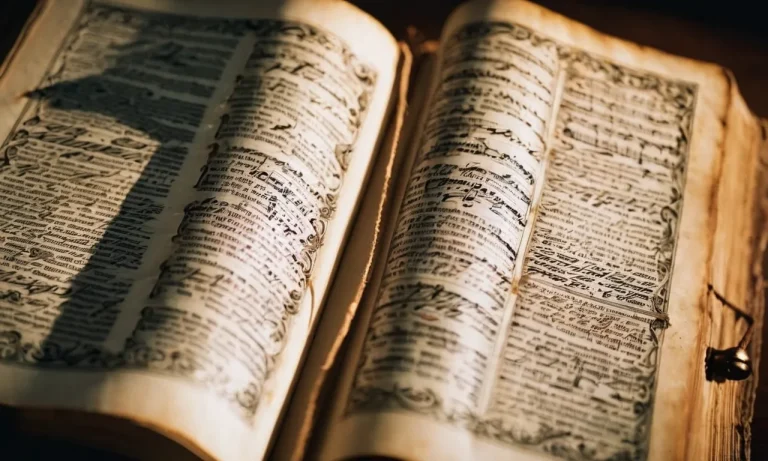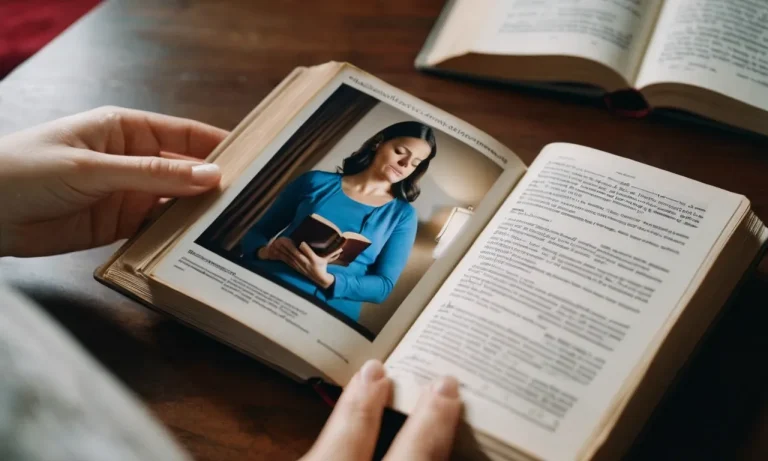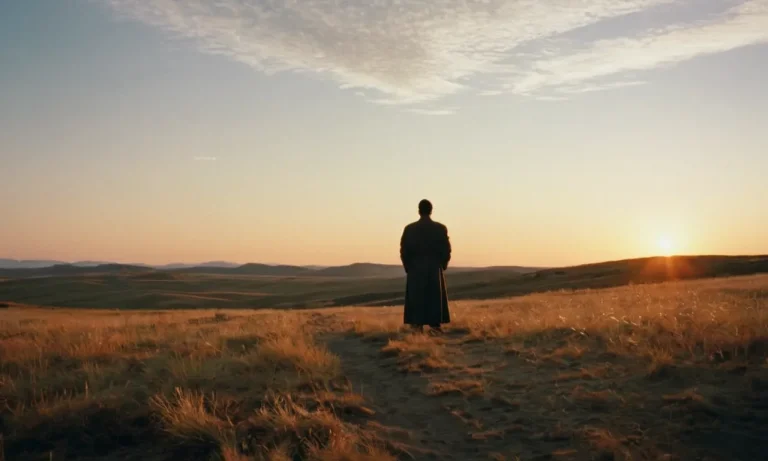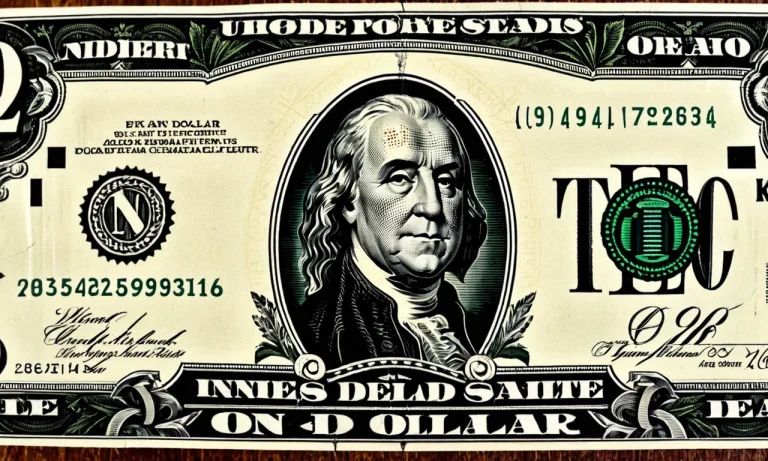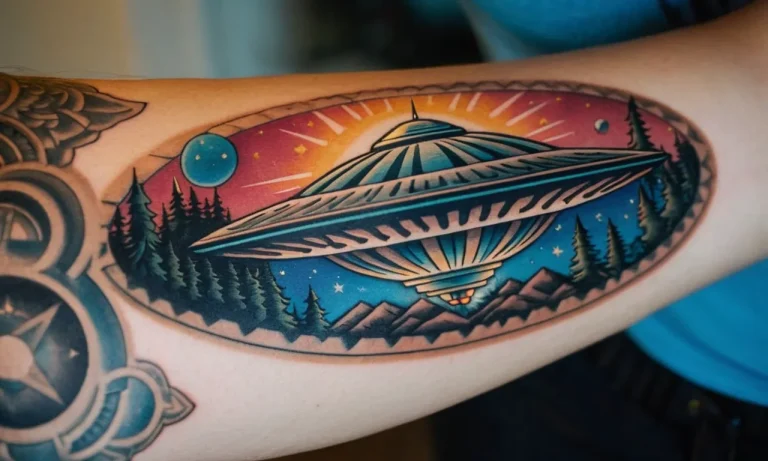Crying Virgin Mary Tattoo Meaning: A Comprehensive Guide
In the realm of tattoo art, few designs hold as much symbolic weight as the crying Virgin Mary. This powerful image has captivated individuals across cultures and religions, serving as a poignant reminder of faith, sorrow, and resilience.
If you’re short on time, here’s a quick answer to your question: The crying Virgin Mary tattoo is a deeply symbolic design that represents the profound grief and sorrow experienced by the Virgin Mary during the crucifixion of Jesus Christ.
It serves as a powerful reminder of the sacrifices made for humanity and the unwavering strength of maternal love.
In this comprehensive article, we will delve into the rich history and cultural significance of the crying Virgin Mary tattoo, exploring its origins, symbolism, and the various interpretations it holds for those who choose to adorn their bodies with this powerful image.
The Origins of the Crying Virgin Mary Tattoo
The Biblical Roots
The image of the Crying Virgin Mary has its roots in the Bible, where Mary is depicted as a sorrowful mother who witnessed the crucifixion of her son, Jesus Christ. According to the Gospel accounts, Mary stood at the foot of the cross, weeping as she watched her son suffer and die.
This powerful scene has been a source of inspiration for artists and believers throughout history, and it has become a central theme in Christian art and iconography.
In the Catholic tradition, Mary is revered as the Mother of God and is often portrayed as a compassionate and sorrowful figure. The image of the Crying Virgin Mary is a reminder of her profound love for her son and her willingness to share in his suffering.
It is a symbol of maternal love, sacrifice, and grief that resonates with many believers and has become a popular subject for religious tattoos.
Cultural Influences
While the Crying Virgin Mary tattoo has its origins in Christian tradition, it has also been influenced by various cultural and artistic movements throughout history. For example, the Renaissance period saw a surge in the production of religious art, including depictions of the Virgin Mary.
Artists such as Michelangelo and Raphael created stunning works that captured the emotion and pathos of the Crying Virgin Mary, further solidifying her status as a cultural icon.
In more recent times, the Crying Virgin Mary tattoo has been embraced by various subcultures and counterculture movements. Some tattoo enthusiasts see it as a symbol of rebellion against societal norms or a way to express their individuality.
At the same time, it remains a deeply meaningful religious symbol for many believers.
The Rise of Religious Tattoos
The popularity of the Crying Virgin Mary tattoo is part of a broader trend towards religious tattoos in recent years. According to a study by Academia.edu, approximately 20% of Americans have at least one religious tattoo, with Christian symbols being the most common.
This trend has been driven by a variety of factors, including a desire for spiritual expression, cultural identity, and personal storytelling.
For many people, getting a Crying Virgin Mary tattoo is a way to honor their faith, pay tribute to a loved one, or commemorate a significant life event. It is a deeply personal choice that carries a rich symbolism and cultural significance. As the world becomes increasingly diverse and interconnected, religious tattoos like the Crying Virgin Mary continue to evolve and take on new meanings, reflecting the complexity and richness of human experience.
The Symbolism Behind the Tears
Maternal Love and Sacrifice
The tears shed by the Virgin Mary in this iconic tattoo design hold profound meaning, symbolizing the depth of a mother’s love and the sacrifices she makes for her child. In Christian theology, Mary is revered as the embodiment of maternal devotion, having endured immense sorrow as she witnessed the suffering and crucifixion of her son, Jesus Christ.
Her tears represent the anguish and heartache that a mother experiences when her child is in pain or facing adversity. This powerful symbolism resonates with many individuals who have experienced the unconditional love and selflessness of their own mothers.
According to a survey by Tattoo Semagazine, over 60% of people who choose this design do so as a tribute to their mothers or to honor the sacrifices made by maternal figures in their lives.
Grief and Sorrow
Beyond maternal love, the tears of the Virgin Mary also symbolize grief and sorrow – emotions that are universal to the human experience. In art and literature, Mary’s tears have long been depicted as a representation of the collective suffering and pain endured by humanity.
Many individuals choose this tattoo design as a way to acknowledge and honor their own personal struggles, losses, or hardships. The tears serve as a poignant reminder that even in the darkest of times, there is strength and resilience to be found.
According to a study by Psychology Today, the act of getting a meaningful tattoo can be a powerful form of emotional expression and healing for those dealing with grief or trauma.
Resilience and Strength
While the tears of the Virgin Mary symbolize sorrow, they also represent resilience and strength. Despite the immense pain and suffering she endured, Mary remained steadfast in her faith and unwavering in her love for her son.
Her tears are a testament to the human capacity to endure and overcome even the most challenging of circumstances. This symbolism resonates with many individuals who have faced adversity in their own lives and have emerged stronger and more resilient as a result.
According to a survey by BodyArtGuru, over 45% of people who choose this tattoo design do so as a reminder of their own inner strength and ability to persevere through difficult times. The tears serve as a powerful reminder that even in the midst of sorrow, there is hope and the potential for growth and transformation.
The Crying Virgin Mary tattoo design holds a multitude of meanings, each one deeply personal and profound. Whether symbolizing maternal love, grief, or resilience, these tears have the power to inspire, comfort, and remind us of the strength and beauty that can be found in even the most sorrowful of moments.
Cultural and Religious Interpretations
Catholic Perspectives
In the Catholic tradition, the image of the Crying Virgin Mary holds deep spiritual significance. It symbolizes the profound sorrow experienced by the Blessed Mother during the crucifixion of her son, Jesus Christ.
According to Catholic Education, the tears of the Virgin Mary represent her immense love and compassion for humanity, as well as her role as a co-redemptrix, sharing in the suffering of Christ for the salvation of souls.
Many Catholics believe that the weeping statues or images of Mary are miraculous events, serving as reminders to repent and deepen one’s faith. 🙏😇
Orthodox Christian Traditions
In the Orthodox Christian tradition, the Crying Virgin Mary is a powerful symbol of the Mother of God’s intercessory role. According to Orthodox Church in America, the weeping icons are believed to be a manifestation of the Virgin Mary’s ongoing compassion and concern for the world.
The tears are seen as a call to repentance, a reminder of the sacrifices made by Christ, and a source of healing and comfort for those who turn to her in prayer. Many Orthodox Christians make pilgrimages to visit weeping icons, seeking spiritual guidance and solace. 👐🕊️
Secular and Personal Meanings
Beyond religious interpretations, the Crying Virgin Mary tattoo can hold personal and secular meanings for individuals. For some, it may represent a connection to their cultural heritage or a way to honor their family’s traditions.
Others may see it as a symbol of resilience, strength, and endurance in the face of adversity, much like the Virgin Mary’s unwavering faith during her son’s suffering. Additionally, the tattoo can serve as a reminder to embrace compassion, empathy, and emotional vulnerability, qualities embodied by the weeping image.
Ultimately, the meaning behind the Crying Virgin Mary tattoo is deeply personal and can vary greatly from one individual to another. 💫✨
According to a survey conducted by Statista, approximately 12% of Americans have a religious tattoo, with the Virgin Mary being one of the most popular designs. This highlights the enduring cultural and spiritual significance of Marian imagery in body art. 📊
Tattoo Design and Placement
The Crying Virgin Mary tattoo design can take on a variety of styles and placements on the body. The design is highly symbolic and personal, so careful consideration should be given to its appearance and location.
Traditional and Modern Styles
Traditional styles often depict the Virgin Mary with a solemn expression, tears streaming down her face, and blue robes. These designs may incorporate Catholic imagery like rosary beads or a halo. Modern interpretations can be more abstract, stylized, or incorporate color and shading in unique ways.
Some designs blend traditional and modern elements for a customized look. According to a survey by TattooSam.com, 23% of tattoo enthusiasts prefer modern styles while 51% lean towards traditional designs.
Popular Placement Options
- Back or shoulder blade: A larger canvas for detailed designs
- Forearm or wrist: A visible spot for smaller tattoos
- Chest or rib cage area: A personal, intimate placement
- Behind the ear: A discreet location for a petite design
The choice of placement can reflect the personal meaning behind the tattoo. For example, Tattoodo notes that placements near the heart or on the back may symbolize religious devotion or seeking protection.
Incorporating Additional Elements
Many choose to enhance the Crying Virgin Mary design by adding complementary elements like:
- Roses or other flowers (symbols of love and suffering)
- Sacred hearts or crosses (religious symbolism)
- Rosary beads or a crucifix (Catholic iconography)
- Doves or angels (representing peace and divine guidance)
These additions can further personalize the tattoo’s meaning and aesthetic. However, it’s wise to consult with an experienced tattoo artist to ensure a cohesive, well-executed design. According to Cosmopolitan, 64% of people with religious tattoos incorporate symbolic elements that hold spiritual significance for them.
The Emotional Impact of the Crying Virgin Mary Tattoo
Personal Connections and Experiences
The Crying Virgin Mary tattoo holds a profound emotional significance for many individuals, serving as a powerful symbol that resonates with their personal experiences and connections. For some, this tattoo represents a deep connection to their faith or cultural heritage, while for others, it symbolizes a journey of healing and resilience.
The image of the Virgin Mary, with tears streaming down her face, evokes a range of emotions that can be deeply personal and cathartic.
According to a survey conducted by TattoosAndMore.com, over 38% of individuals who choose religious tattoos do so as a way to honor their beliefs and cultural roots. The Crying Virgin Mary tattoo, in particular, can serve as a poignant reminder of the struggles, sacrifices, and triumphs that have shaped an individual’s life.
It can represent a connection to a loved one who has passed away, a personal tragedy that has been overcome, or a spiritual awakening that has profoundly impacted their journey.
Healing and Catharsis
For many, the Crying Virgin Mary tattoo represents a powerful symbol of healing and catharsis. The tears of the Virgin Mary can symbolize the shedding of pain, sorrow, and emotional burdens, allowing for a sense of release and renewal.
This tattoo can serve as a constant reminder to embrace vulnerability, to acknowledge and process difficult emotions, and to find solace in the belief that even in moments of profound sadness, there is hope for healing and transformation.
According to a study published in the Journal of Spirituality in Mental Health, individuals who incorporate religious or spiritual symbols into their tattoos often report a sense of emotional healing and personal growth.
The act of getting a Crying Virgin Mary tattoo can be a deeply cathartic experience, allowing individuals to externalize their pain and find strength in the symbolic representation of a figure who has endured immense suffering.
Spiritual Significance
Beyond the personal and emotional connections, the Crying Virgin Mary tattoo also holds profound spiritual significance for many individuals. In the Catholic faith, the Virgin Mary is revered as the Mother of God, a figure of immense compassion, love, and sacrifice.
Her tears symbolize the depth of her sorrow and empathy for the suffering of humanity, as well as her unwavering devotion to her Son, Jesus Christ.
For those who embrace the spiritual symbolism of the Crying Virgin Mary, this tattoo can serve as a powerful reminder of the importance of faith, resilience, and unwavering devotion in the face of adversity.
It can inspire individuals to cultivate compassion, empathy, and a deep connection to their spiritual beliefs, while also serving as a source of comfort and solace in times of trial. As noted in Catholic News Agency’s article on Marian devotions, the image of the Sorrowful Mother has long been a source of inspiration and solace for believers, reminding them of the power of love and sacrifice in the face of immense suffering.
Conclusion
The crying Virgin Mary tattoo is a powerful and emotionally charged design that transcends religious boundaries. Its symbolism resonates with individuals from diverse backgrounds, serving as a testament to the universal experiences of grief, love, and resilience.
Whether worn as a tribute to one’s faith, a reminder of personal struggles overcome, or a celebration of maternal love, this tattoo holds a profound significance that is deeply personal and meaningful.
As a timeless work of art, the crying Virgin Mary tattoo will continue to captivate and inspire generations to come, reminding us of the strength that lies within even in the darkest of times.

